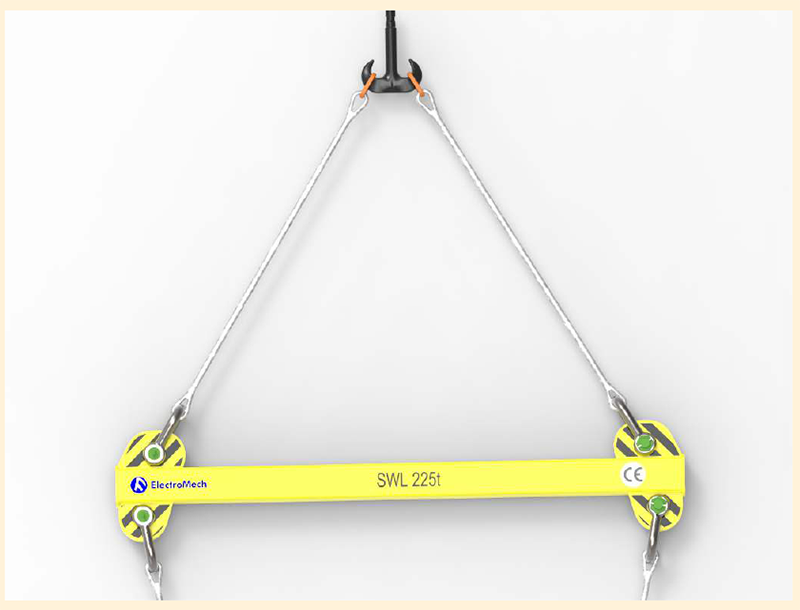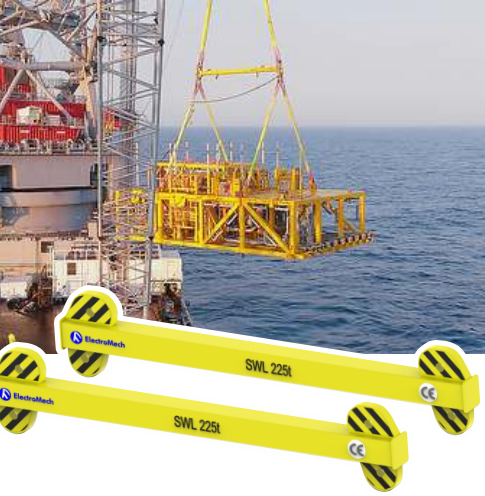WE ARE YOUR SOLUTION
For offshore transportation and installation of the gas turbine skid on FLNG rig, the Spreader/Lifting Beam facilitates extremely safe, precise and convenient handling.

For offshore transportation and installation of the gas turbine skid on FLNG rig, the Spreader/Lifting Beam facilitates extremely safe, precise and convenient handling.

The Coral FLNG facility is designed to produce nearly 3.4 MMT/yr. of LNG and uses aero-derivative gas turbines for the power and gas refrigeration process. This is the first ever Floating LNG facility built in Africa and had complex requirements involving specialist QA requirements for the Oil & Gas offshore industry.
During the construction of the FLNG facility, specialised handling devices are used for Offshore Transportation and Installation (OT&I) of heavy and large-sized machinery. It includes several skid mounted systems of critical gas turbine, which are required to be handled in a safe manner.
For proper load distribution during lifting of long and heavy items, Lifting/Spreader beams are used.
As one of the mandatory requirements of offshore supplies, the beam had to be designed as per Lloyd’s code for Lifting Appliances in a marine environment. This also involved the verification and approval of calculations and FEM report by an authorised Lloyd’s inspector. Besides, the lifting beam had to undergo rigorous quality checks at every stage to ensure the highest quality and mitigate risk during operation.
ElectroMech designed and manufactured 225t WLL spreader beams for the offshore transportation and installation of preassembled units onto floating LNG
Built to fulfill special QA requirements for the Oil & Gas offshore industry
Verification and approval as per Lloyd's code
Tested at 450t load before despatch

| SWL | Operating temperature range | Beam length |
|---|---|---|
| 225t | -20°C to 40°C | 6.7m |
The ElectroMech design team ensured that the beam design met the required criteria and specified standards. With our vast experience in designing pertinent solutions for the most challenging requirements, the verification and approval of the drawing and calculations were completed in the first go. Manufacturing was undertaken only after receiving approval on the Weld Map. During the manufacturing process, stage inspections were also carried out by the customer.
A completely manufactured spreader beam was then assembled and the load test was carried out at 200% load i.e., 450t in the presence of Lloyd's Authorised Inspector. The complete process of testing and inspection was to everyone's satisfaction without errors and subsequently, NDT and painting were carried out. The final inspection involved review and signing of completion reports of the beam as well as all the bought out items like D shackles, Turnbuckles and Slings. After complete compliance, the spreader beam was despatched to the project site. 'Right the First Time' development of the Lifting/Spreader Beam for this project is a further affirmation of our design competence and adherence to high standards of manufacturing and testing
ElectroMech continues to support safe lifting of heavy equipment during onshore and offshore installations through various projects and clients across the world.

Disclaimer
© Copyright 2020 | All the names and logos used here are the registered trademarks of respective companies. For private circulation only. Certain data mentioned here is based on assumptions and theoretical calculations, hence may not be accurate in practice and can’t be considered as a claim by the company.